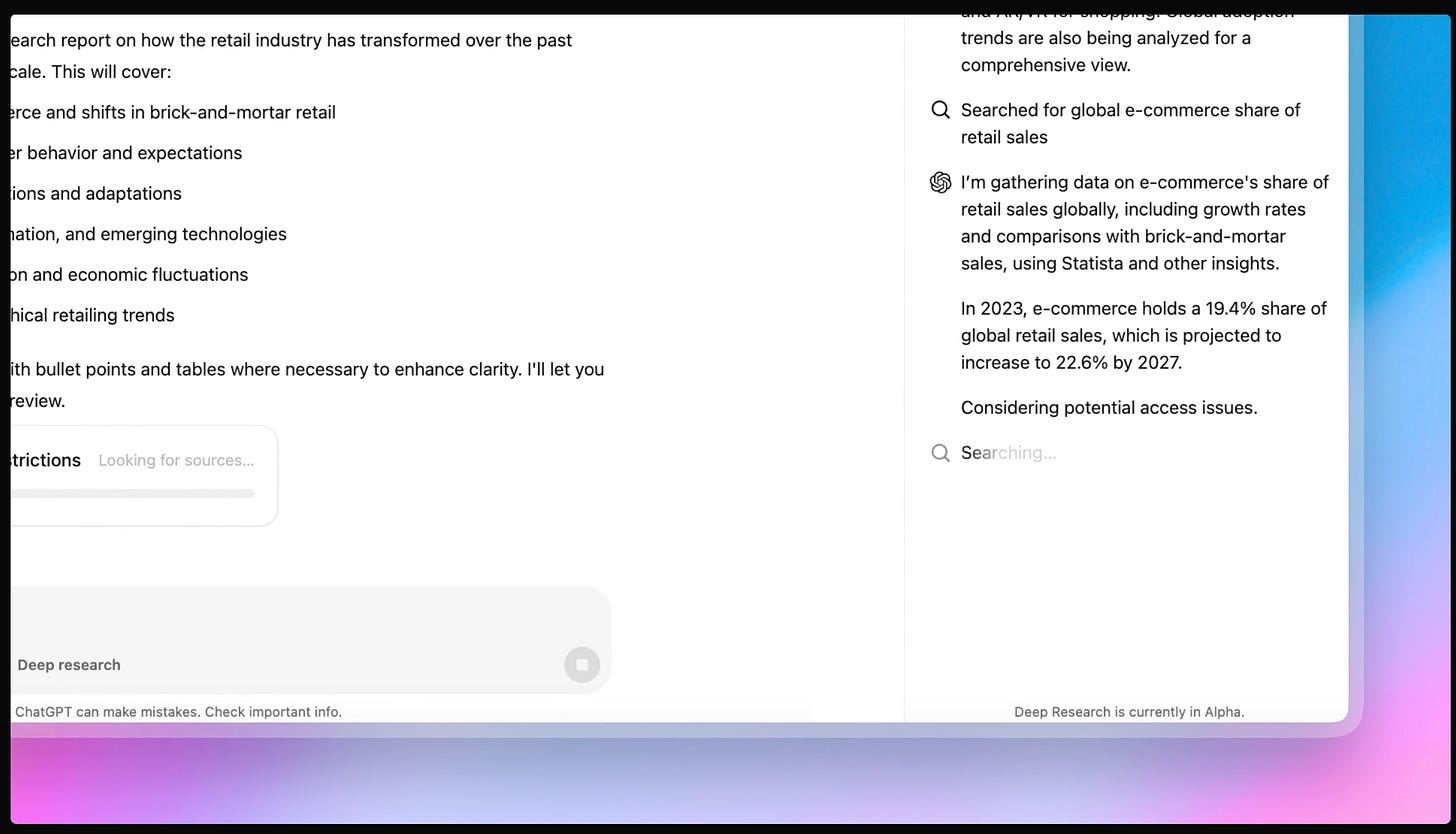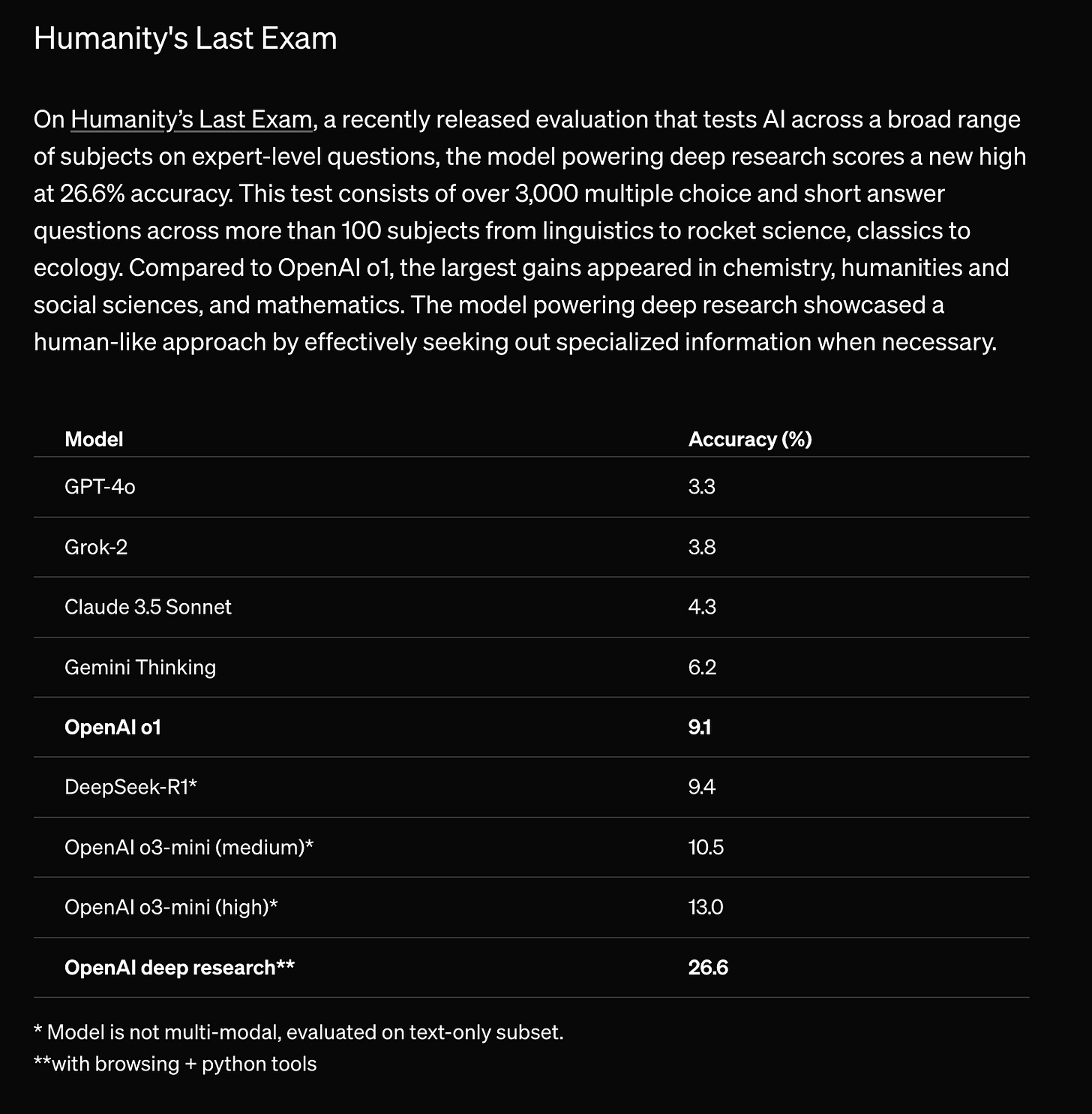ChatGPT’s '“deep research” is a new AI agent from OpenAI that conducts multi-step research across the internet. But calling it just a "research tool" doesn't capture what makes it special.
This is an AI system that:
Analyzes many online sources simultaneously
Creates comprehensive reports at research analyst level
Uses reasoning to interpret massive amounts of text, images, and PDFs
Shows you its thought process as it works
It's powered by a specialized version of OpenAI's upcoming o3 model, specifically optimized for web browsing and data analysis.
In this video edition, let me share what I discovered while testing it. (I finally dropped that $200 price tag to get access and test it so you don’t have to.)
When you start a deep research query, you'll notice something different: instead of instant responses, you see the AI's actual research process unfolding.
It shows you:
Which sources it's evaluating
How it's connecting information
Why it chooses certain references over others
Every step of its reasoning process
But here's what really sets it apart I think: you can run multiple research queries simultaneously. In my testing, I had it analyzing medical robotics papers while simultaneously researching AI content creation trends. Each query maintained its own separate analysis thread, complete with independent source tracking and verification.
The power of deep research comes from three key capabilities:
Multi-threaded research: Deep research can handle multiple complex queries at once. These aren't just parallel conversations - they're full research investigations running simultaneously.
Comprehensive synthesis: When deep research analyzes a topic, it identifies patterns, connects related concepts, and builds a coherent understanding across hundreds of sources. Each insight comes with clear citations and source verification.
Transparent reasoning: You can see how the AI thinks. Every research session includes a detailed log of its process - which sources it consulted, why it made certain connections, and how it arrived at its conclusions.
What can you realistically use it for?
Based on my testing and the official documentation, deep research excels at:
Academic literature review
Market and industry analysis
Technical documentation research
Comparative product research
Complex topic synthesis
But there's a catch: this is currently a Pro-only feature ($200/month). OpenAI plans to bring it to Plus and Team plans eventually, but for now, it's limited to Pro users.
Is it worth it?
That depends entirely on your research needs.
If you regularly spend hours diving deep into complex topics, synthesizing information from multiple sources, or need comprehensive analysis with verified citations - this could be really helpful for your workflow.
Watch the full video walkthrough above where I demonstrate how it actually works, explore its real capabilities and limitations, and show some interesting things I discovered along the way.
I'd love to hear your thoughts - especially if you've found creative ways to use deep research or run into challenges I didn't cover. Drop your insights in the comments below and let's figure out how to push this tool to its limits together.
Also - comment below with specific queries or requests you want to see. I'll be doing more deep dives into specialized use cases, and your suggestions help shape what we explore next. Besides, it’s the only way you can get some personalized testing before dropping that crazy price on it…








